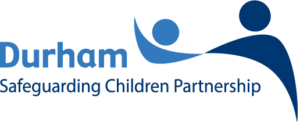Signs of Safety is the model that we use in County Durham to support our work with children and families. This is how it has helped families we work with.
Signs of Safety is about you, your child and your family working together
Signs of Safety is about you, your child and your family working together so that your child can be safe and well. Rather than professionals like social workers, teachers or health visitors having all the answers to problems, Signs of Safety recognises that families are the experts in their own lives and this approach puts children and families at the heart of assessments and planning.
Families tell us that they don’t always know what we expect them to do. Children and young people sometimes tell us that they don’t have much say in the things that are happening to them and they don’t understand why we are involved in their lives. Your family is key in working with professionals to understand the worries about your child (what we are worried about and why), as well as understanding all of the good things about how your child is cared for (strengths) and times that the worries have been dealt with so that hasn’t affected your child (safety). When we understand what we are worried about and what is working well, families and professionals agree what needs to happen (goals) in order for your child to be safe and well so that everyone is clear about this.
The difference that Signs of Safety can make to the way that professionals work with you and your children
We will make sure that we are talking to you, your child and the people you tell us are important to you, like grandparents, aunties and uncles, friends and neighbours so that we can understand what life is like for you and your child and your ideas for making things better. We will also talk to professionals who are working with you and your family.
We will ask everyone questions like:
- what do you think is working well?
- what are you worried about?
- what do you think needs to happen for things to get better?
We will use straightforward, easy to understand language to sum up our worries and what we think could happen to your child if things don’t change. We call these Danger Statements. We will be clear about what life needs to look like for your child in order for us not to be worried anymore. We call these Safety Goals. There may still be times where professionals have worries about children that families don’t share and when this happens we need to find ways to work together so that everyone is satisfied that the children are safe.
When we are clear about our Danger Statements and Safety Goals, we will talk to you, you child and the other important people in your life about your ideas for making sure that your child is always kept safe and well, even if something worrying happens again in future. We call these Family Network Meetings and we will check back in with you, your child and your network of supportive people to see how things are going and whether your plan is working or needs to be tweaked. Your social worker will help you to think all of this through by asking some helpful questions.
How we talk with your children
Talking to your child is at the heart of Signs of Safety. It is important that your child has the opportunity to talk about the good things in their life, what they are worried about and what they would like to see happen in their family and community so that they can feel safe.
We use different tools, such as Three Houses and My Safety House, to work with children, so that we can ask them their views and help to make plans so that they feel safe.
How we work together to create plans
We will aim to work alongside you and your child to help your child better understand their plan using Words and Pictures. We will use the language that you and your children use so that this makes more sense to your child. We will make sure that your child has a Words and Pictures explanation if there is a big change to their living arrangements, e.g. if a parent leaves home or your child lives somewhere else for a period of time, as we know how important it is for children to be able to make sense of any changes so that they don’t blame themselves.
You will be given a copy of the plan that you, your child and your network have come up with. The same plan will be used in meetings between you, your child and your network as well as meetings between you and other professionals.
Your child’s social worker will check with you, your child, your network and professionals to see how well the plan is working and you will decide together what needs to happen next if there are still some worries. When everyone feels that the plan has been tried and tested and the children have been kept safe, then we will end our involvement.
